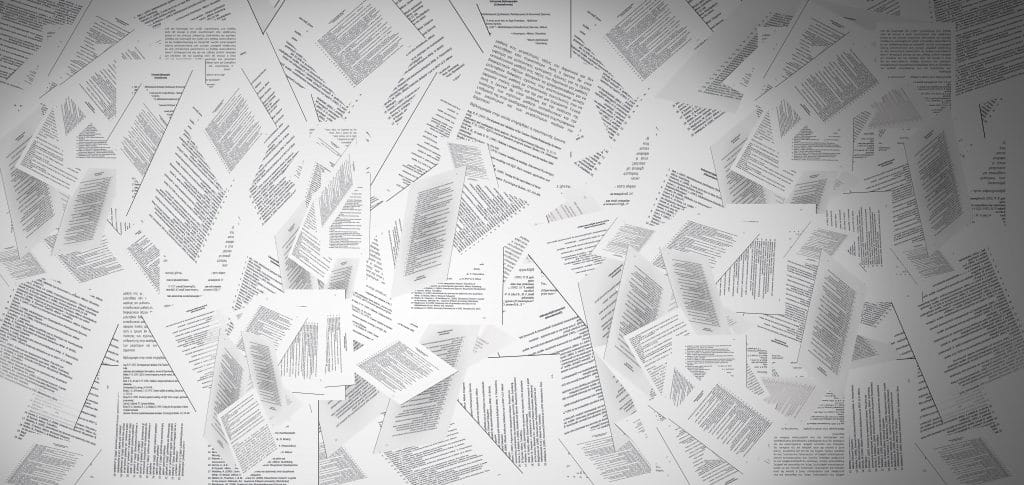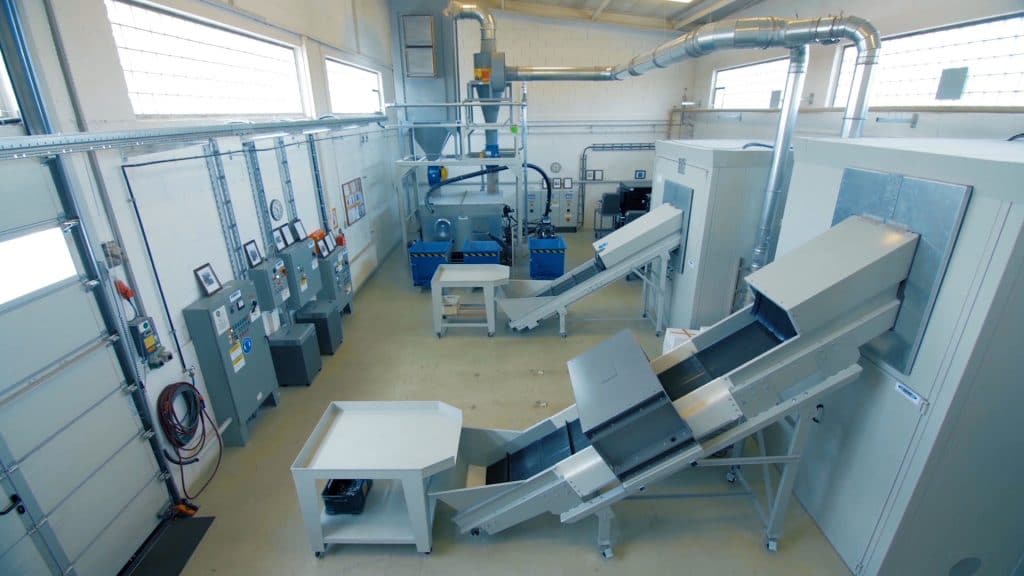What is HIPAA?
HIPAA is an acronym for Health Insurance Portability Accountability Act which was enacted in 1996. It requires the Secretary of the U.S. Department of Health and Human Services to develop regulations protecting the privacy and security of certain health information.
The HIPAA law applies to anyone that has visited any health care facility, basically everyone. Before the law was enacted, the fates of our medical records were left in the hands of the health care professionals. Some disposed of them properly but some just threw them into the dumpster. As with our old credit card statements and other mail or personal information, once they are thrown in the dumpster they are community property and anyone can have access to them.

Your Health Information Is Protected By Federal Law
Most of the population believes that medical and health information is private and should be protected, and want to know who has access to this information. The Privacy Rule, a Federal law, gives you rights over your health information and sets rules and limits on who can look at and receive your health information. The Privacy Rule applies to all forms of individuals’ protected health information, whether electronic, written, or oral. The Security Rule, a Federal law that protects health information in electronic form, requires entities covered by HIPAA to ensure that electronic protected health information is secure.
How Our Information Is Treated and Disposed Of
The HIPAA Privacy Rule requires that covered entities apply appropriate administrative, technical, and physical safeguards to protect the privacy of protected health information (PHI), in any form. This means that covered entities must implement reasonable safeguards to limit incidental, and avoid prohibited, uses and disclosures of PHI, including in connection with the disposal of such information. In addition, the HIPAA Security Rule requires that covered entities implement policies and procedures to address the final disposition of electronic PHI and/or the hardware or electronic media on which it is stored, as well as to implement procedures for removal of electronic PHI from electronic media before the media are made available for re-use. Failing to implement reasonable safeguards to protect PHI in connection with disposal could result in impermissible disclosures of PHI.
Further, covered entities must ensure that their workforce members receive training on and follow the disposal policies and procedures of the covered entity, as necessary and appropriate for each workforce member. Therefore, any workforce member involved in disposing of PHI, or who supervises others who dispose of PHI, must receive training on disposal. This includes any volunteers.
Thus, covered entities are not permitted to simply abandon PHI or dispose of it in dumpsters or other containers that are accessible by the public or other unauthorized persons. However, the Privacy and Security Rules do not require a particular disposal method. Covered entities must review their own circumstances to determine what steps are reasonable to safeguard PHI through disposal, and develop and implement policies and procedures to carry out those steps. In determining what is reasonable, covered entities should assess potential risks to patient privacy, as well as consider such issues as the form, type, and amount of PHI to be disposed. For instance, the disposal of certain types of PHI such as name, social security number, driver’s license number, debit or credit card number, diagnosis, treatment information, or other sensitive information may warrant more care due to the risk that inappropriate access to this information may result in identity theft, employment or other discrimination, or harm to an individual’s reputation.
In general, examples of proper disposal methods may include, but are not limited to:
-
- For PHI in paper records, shredding, burning, pulping, or pulverizing the records so that PHI is rendered essentially unreadable, indecipherable, and otherwise cannot be reconstructed.
- Maintaining labeled prescription bottles and other PHI in opaque bags in a secure area and using a disposal vendor as a business associate to pick up and shred or otherwise destroy the PHI.
In addition, for practical information on how to handle sanitization of PHI throughout the information life cycle, readers may consult NIST SP 800-88. Guidelines for Media Sanitization
NIST Guidelines
Destruction of media is the ultimate form of sanitization. After media is destroyed, it cannot be reused as originally intended. Physical destruction can be accomplished using a variety of methods, including disintegration, incineration, pulverizing, shredding, and melting.
If destruction is decided upon due to the high security categorization of the information or due to environmental factors, any residual medium should be able to withstand a laboratory attack.
Disintegration, incineration, pulverization, and melting: these sanitization methods are designed to completely destroy the media. They are typically carried out at an outsourced metal destruction or incineration facility with the specific capabilities to perform these activities effectively, securely, and safely. End-of-life data destruction machines can also be purchased to destroy the material on site.
Shredding: paper shredders can be used to destroy paper and in some models, flexible media such as diskettes once the media are physically removed from their outer containers. The shred size of the refuse should be small enough that there is reasonable assurance in proportion to the data confidentiality level that the information cannot be reconstructed.
Optical mass storage media, including compact disks (CD, CD-RW, CD-R, CD-ROM), optical disks (DVD), Blue-ray Discs (BDs) and magneto-optic (MO) disks must be destroyed by pulverizing, crosscut shredding or burning. Destruction of media should be conducted only by trained and authorized personnel. Safety, hazmat, and special disposition needs should be identified and addressed prior to conducting any media destruction.
Enforcement and Penalties for Noncompliance
The Department of Health and Human Services, Office for Civil Rights (OCR) is responsible for administering and enforcing the standards and may conduct complaint investigations and compliance reviews.
The OCR will seek the cooperation of covered entities and may provide technical assistance to help them comply voluntarily with the Privacy Rule. Covered entities that fail to comply voluntarily with the standards may be subject to civil money penalties. In addition, certain violations of the Privacy Rule may be subject to criminal prosecution.
Civil Money Penalties
OCR may impose a penalty on a covered entity for a failure to comply with a requirement of the Privacy Rule. Penalties will vary significantly depending on factors such as the date of the violation, whether the covered entity knew or should have known of the failure to comply, or whether the covered entity’s failure to comply was due to willful neglect. Penalties may not exceed a calendar year cap for multiple violations of the same requirement. Criminal Penalties A person who knowingly obtains or discloses individually identifiable health information in violation of the Privacy Rule may face a criminal penalty of up to $50,000 and up to one-year imprisonment. The criminal penalties increase to $100,000 and up to five years imprisonment if the wrongful conduct involves false pretenses, and to $250,000 and up to 10 years imprisonment if the wrongful conduct involves the intent to sell, transfer, or use identifiable health information for commercial advantage, personal gain or malicious harm. The Department of Justice is responsible for criminal prosecutions under the Privacy Rule.
Summary
HIPAA covers a broad area of responsibilities. We are all involved in this as we all have our personal records out of our personal control and in such are subject to having our personal information compromised. To understand HIPAA is to understand the relationship between the importance of our PHI and our health care providers and the realization that somebody could potentially obtain our information if the proper safeguards are not adhered to. HIPAA sets these guidelines to protect everybody.






 Security Levels 3, 4, and 5 are produced by crosscut shredders. These shredders cut in two directions and produce confetti of various sizes. Security Level 3 is considered a medium security level and a fairly large crosscut particle measuring 3/16” X 3” or less. Security Level 4 is a medium-high security particle measuring 3/32” X 5/8” or less. Level 3 is adequate to meet most unclassified government applications. But if you have doubts, move up to Level 4.
Security Levels 3, 4, and 5 are produced by crosscut shredders. These shredders cut in two directions and produce confetti of various sizes. Security Level 3 is considered a medium security level and a fairly large crosscut particle measuring 3/16” X 3” or less. Security Level 4 is a medium-high security particle measuring 3/32” X 5/8” or less. Level 3 is adequate to meet most unclassified government applications. But if you have doubts, move up to Level 4.